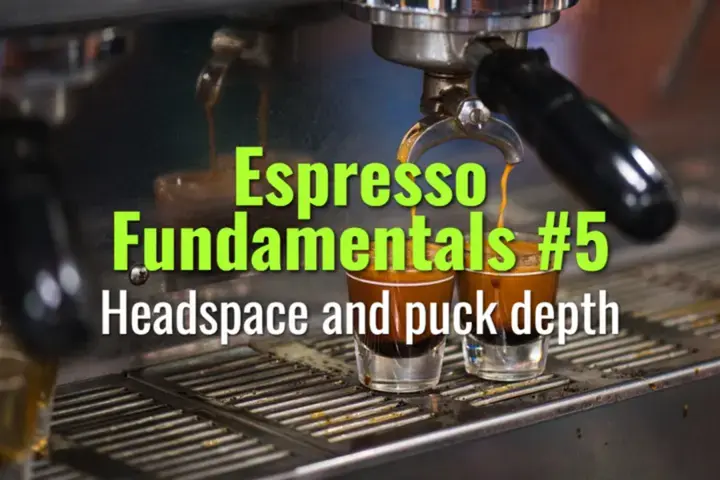Headspace and puck depth
How headspace and puck depth in the portafilter affect flow dynamics, extraction uniformity, and flavor in espresso.
- Coffee Basics Nerds
- 1 min read
Article 5 of 12 in Espresso Fundamentals/

Headspace
- Definition: The gap between the top of the tamped coffee puck and the shower screen of the espresso machine.
- Typical Range: 2–6 mm, depending on basket size and dose.
- Too Little Headspace:
- Puck contacts shower screen → uneven water dispersion, channeling.
- May cause puck disruption when locking in portafilter.
- Too Much Headspace:
- Water falls as jets instead of dispersing evenly.
- Risk of channeling and uneven saturation.
Puck Depth
- Definition: The thickness of the compacted coffee bed.
- Impact on Extraction:
- Shallow Puck: Lower resistance, faster flow, higher risk of under-extraction.
- Deep Puck: Higher resistance, slower flow, risk of stalling or over-extraction if grind is too fine.
- Optimal Depth: Usually 1.5–2.0 cm for standard double baskets, balancing resistance and flow stability.
Interactions
- Headspace and puck depth work together to define hydraulic resistance.
- Proper depth ensures enough mass for even extraction, while correct headspace ensures even water delivery.
Practical Tips
- Match dose to basket size; avoid overfilling or underfilling.
- Test fit: lock in portafilter and check puck imprint for contact with shower screen.
- Use consistent tamping pressure to stabilize puck depth.
Summary
Balanced headspace (2–6 mm) and appropriate puck depth (≈1.5–2.0 cm) ensure even water distribution and stable resistance, preventing channeling and enabling balanced espresso extraction.